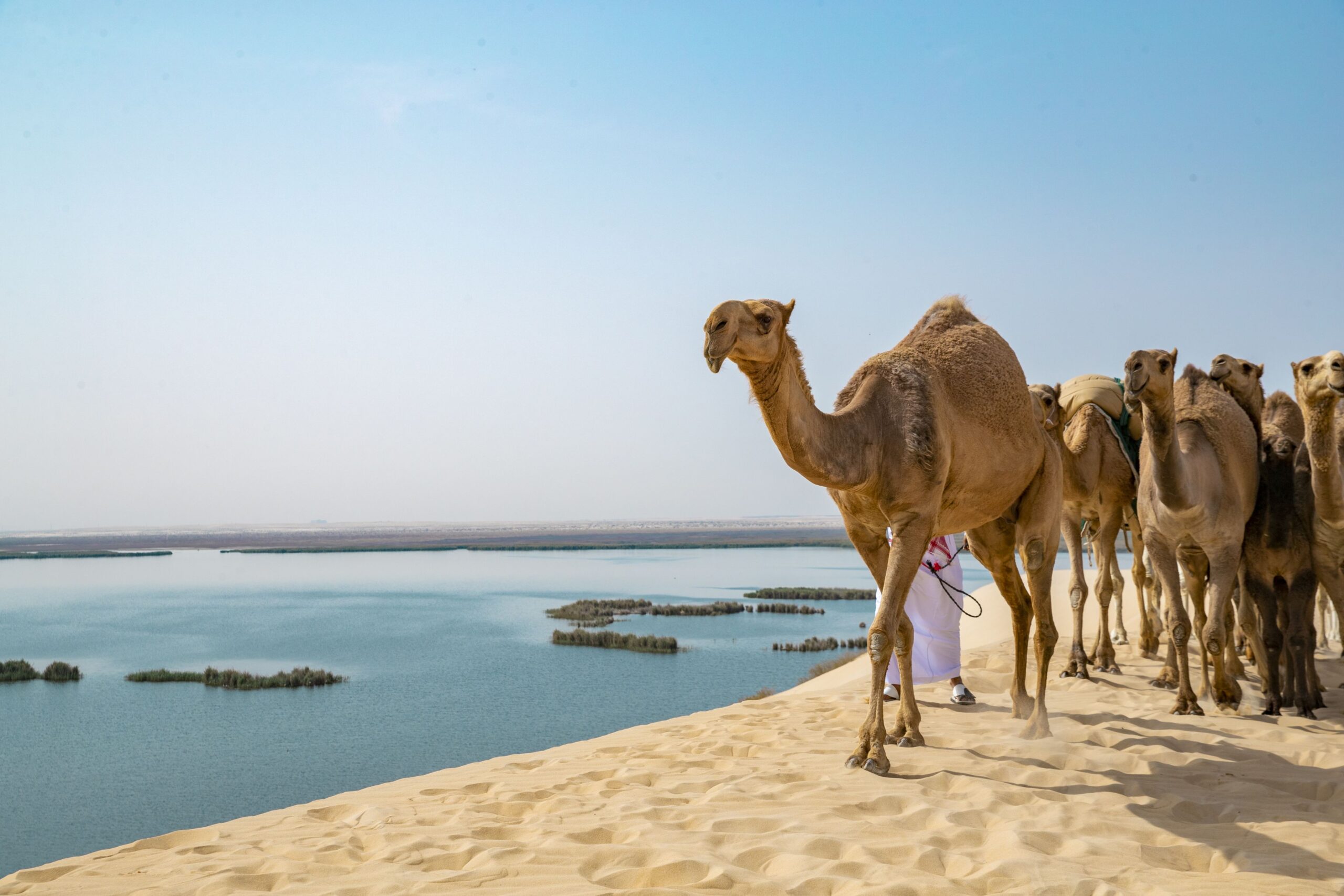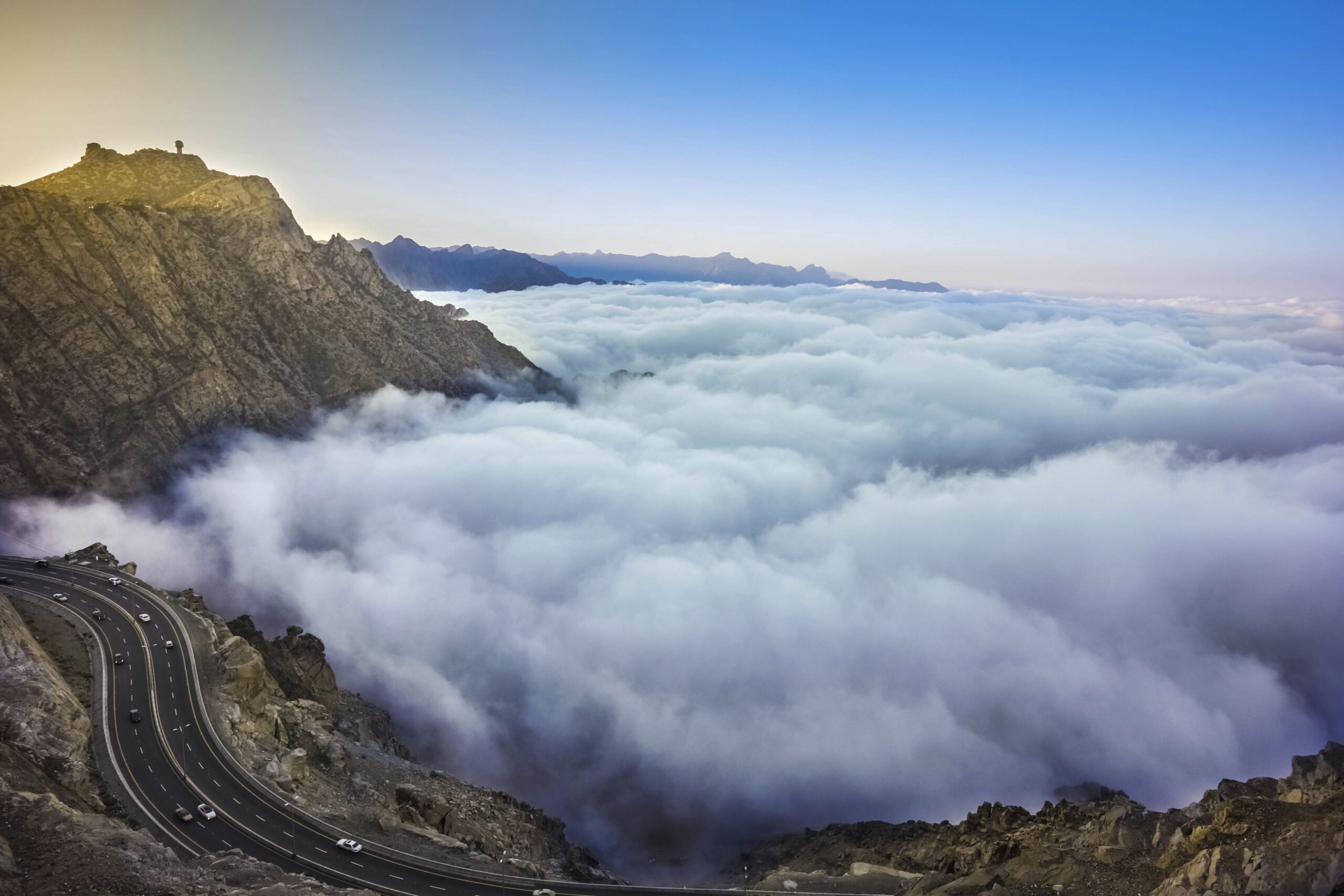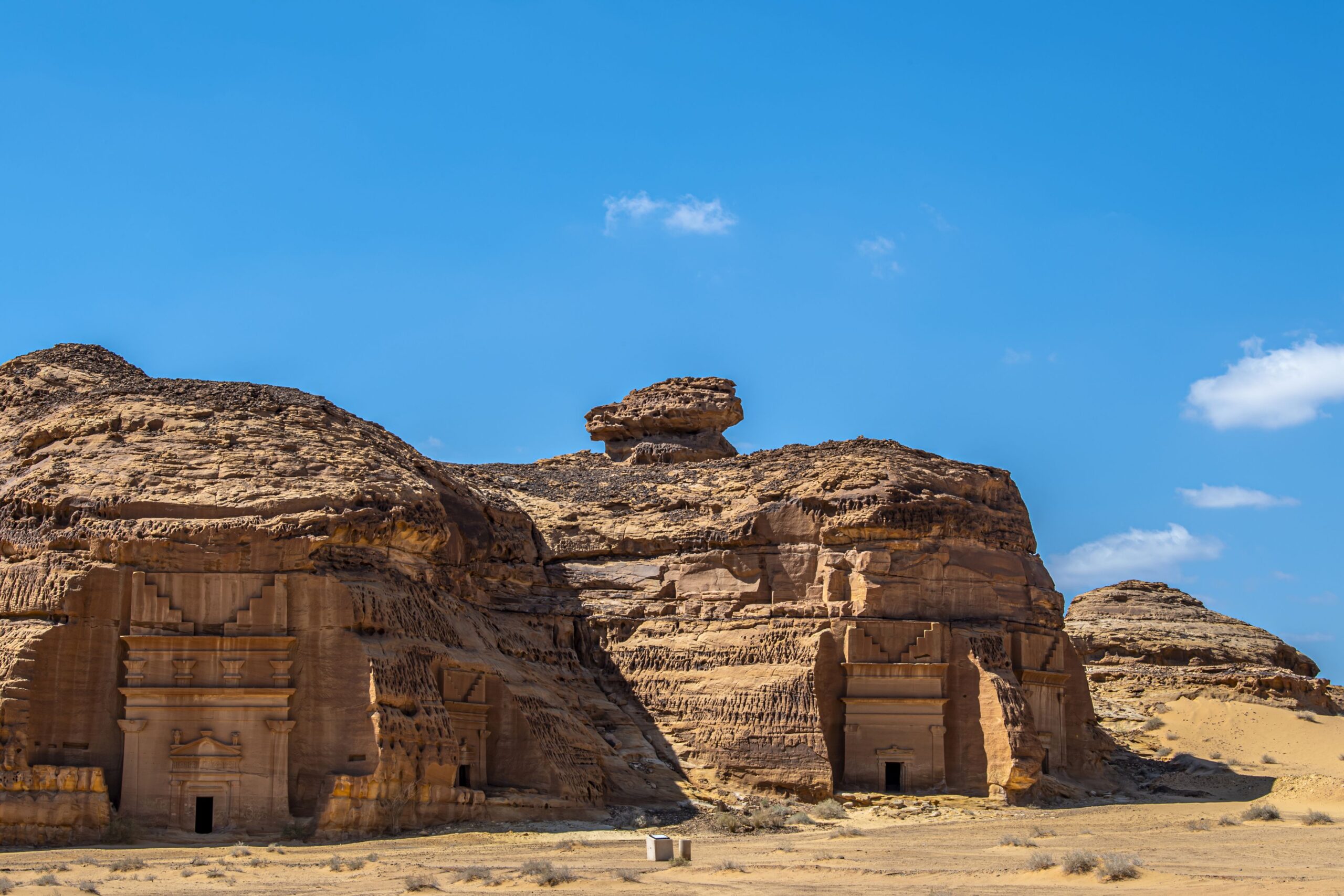
PRACTICAL GUIDE
A seasonal guide to Saudi
Ignore the outdated preconception that Saudi is scorching year-round – this is a country that experiences four distinct seasons, each one with its own unique characteristics…
Words by Jen Curcio
Winter
While every season has its charm, the wintertime is a favourite with locals. Beginning in October, the weather gradually gets cooler and then starts to warm up from March onwards when the summer kicks in. Daytime temperatures range from 20-30°C in the Eastern Province and Riyadh while at night, it’s comfortable to wander the country’s major cities like Riyadh and Dammam in mild temperatures. In Jeddah, there may be a few evenings when the night-time temps go as low as 20°C degrees during Jan-March, and high of 30°C during the daytime. You might even want to take a light jacket out with you in the evenings, as temperatures can drop to 10°C.
Winter’s lower temperatures make it ideal to explore the desert and mountains. This time of year makes for the optimum conditions for camping out in the desert, like in AlUla, as well as across the rest of the country. Even snow is possible here in winter – just head north to the frosted wilds of Jabal al-Lawz in Tabuk, where you can feel the crunch of the snow underfoot as you hike among the mountains. For a mountain adventure in the Eastern Province, you can head out of Jabal Al Qarah, where you can explore ancient caves in the world’s biggest oasis located in Al Ahsa. After exploring the natural gems of the nation, make sure to take the time to try Saudi winter treats. Try aseeda, a warm date dessert made out of date paste, ghee and flour or any milk tea spiced with cardamom or ginger. As March arrives, there is a likelier chance of rain and the months of March, April and May bring the nation the most rainfall for the desert flora to soak up.

Winter is a great time absorb the rays of the sun without experiencing the harshness of the summer heat. Choose from beaches that dot the Red Sea by the city of Jeddah, or opt for a region along the Arabian Gulf by exploring Half Moon Bay in the city of Dammam. Outside of the sand and sapphire waters, you can explore a variety of blooms such as those in the cities of Yanbu and Taif, the latter particularly famous for its roses.
Along with outdoor activities, winter is a great time to sample Saudi’s cuisine. For seafood lovers, head out to any of Saudi’s coastal provinces for a taste of kingfish and shrimp that peaks towards the end of the winter and beginning of the summer. With the increase in warmth in the weather, it is also a great time to explore popular refreshing drinks such as lime juice from Al Hasa and mango desserts from Jazan, while lemon-mint is a popular drink with locals throughout Saudi. If you end up encountering a bout of rain during your Saudi winter that interrupts any excursion, take the moment as a peaceful break as rainfall in the region is traditionally seen as a blessing from the skies that refreshes the lands. However, sometimes rainfall in Saudi can be quick and heavy, causing flash flooding so be cautious.

Saudi summers are known for being particularly strong and are characterised by extreme heat, dryness in the central provinces near the capital of Riyadh and strong humidity in the Eastern Province and coastal areas. Despite average temperatures in the high 30s degrees Celsius and potential highs of 45 degrees Celsius, don’t worry! For a refreshing journey amidst the heat, it is best to head for the mountains and Asir. Both Mecca and Asir provinces, home to popular cities Abha and Taif, sit along the southwestern portion of the nation and enjoy cooler temperatures throughout the year, averaging 25°C.
In Asir, you can find Abha, a city which sits above the clouds after it has rained. The lush vegetation and sweeping mountains make for the perfect environment to trek through the countryside. Head out to the mountains, where Al Soudah is the highest peak at over 3,015m, to get as close as you can to the city’s characteristic foggy clouds. Two and a half hours outside of Taif will take you to Wahba Crater, the largest volcanic crater in the Kingdom. Take in the geological beauty of the crater or choose to hike amongst volcanic Harrat.

Late summer in Saudi is the perfect time to celebrate the emerald palm trees that envelop the Kingdom, particularly the palm springs in Al Ahsa. While weather will vary from 30°C and above during the day, an escape to Al Ahsa will guarantee cool nights of 25°C. Al Ahsa is the largest oasis in the world and bolsters various springs that stay cool year-round along with date and flower farms to your heart’s desire. Ride the cool breeze and use it to explore archaeological sites in the Kingdom such as Hegra. Also known as Mada-in Salah, Hegra is located in AlUla the Medina Province and features remnants of the Dadan, Lihyanite and Nabataean kingdoms.
To continue celebrating the late summer weather and be surrounded by palms and desert pools, you can choose to head down to Wadi Al Disah in Tabuk province. Part of the larger Prince Mohammed bin Salman Royal Reserve, the late summer months allow you to explore Wadi Al Disah comfortably and leave you enough time to catch a sunset enveloped by lush canyon greenery. Note that late summer is the start of school and work for many in the nation and can be characterised by a rush in traffic and events, especially around 7am and 2pm. Be prepared and book any excursions or events in advance to avoid any troubles.

Practical information

Visas
It’s surprisingly simple and easy to get an e-Visa for Saudi and the process is very similar to applying for an ESTA for the USA. Over 50 nationalities are eligible to apply for an e-Visa, including people from the UK and USA, with it costing (at the time of writing) 535 Saudi riyals (about £115 or US$143). Applications are swift and nearly all applicants will receive a response within three working days – most within 24 hours. To apply for your Saudi e-Visa, visit the official Saudi Tourism Authority website. If you’re from the USA, UK or the Schengen Area, you can also apply for a visa on arrival into Saudi. It’s slightly cheaper than an e-Visa, too, at SAR480 (about £102 or US$128).

Getting there & around

Local customs
To really embrace Saudi life and pay respect towards its traditions, there are a few local customs you should abide when travelling around the country. Both men and women should wear clothing that covers their elbows and below their knees when out in public. If you’re heading to the coast, it’s still expected you dress modestly. When meeting and greeting locals, whether it’s a market stallholder or a private guide, say hello with ‘salam alaykum’, which means ‘peace be upon you’, as well as offering a handshake.

Weather
You might think it’s hot all year round in Saudi but it’s a little more nuanced than that. The best time to visit the country is between October and March, when temperatures can dip as low as 20°C during the daytime, depending on where in the country you are, and rarely exceed 30°C. The summer months between June and September can get extremely hot, with temperatures often north of 40°C. But, do as the locals do and head out after dusk when it’s much cooler!
Is English spoken in Saudi?
Arabic is the official national language but English is widely spoken.
What is the currency of Saudi?
The currency of Saudi is the riyal, with the current rate (at the time of writing), around SAR4.76 to the UK£. You’ll need to pre-order money before you travel, as in the UK it’s not usually stocked in currency exchange booths.
What’s it like travelling in Saudi as a female?
We think you’d be surprised! To find out more, read our first-hand account on what it’s like to travel in Saudi.
What’s the time difference in Saudi?
Saudi follows Arabia Standard Time (GMT +3) all year round.



